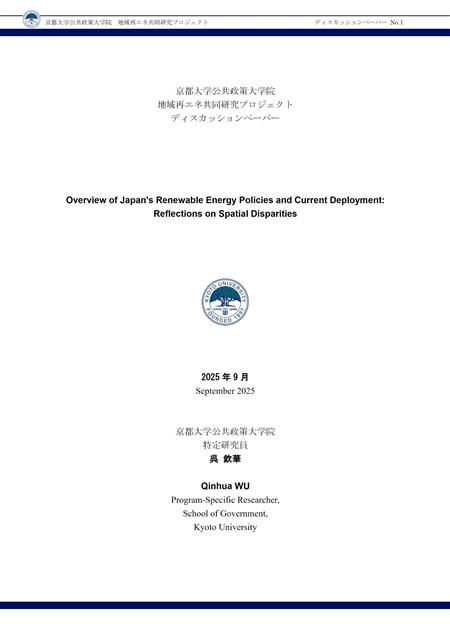No.1 Overview of Japan's Renewable Energy Policies and Current Deployment: Reflections on Spatial Disparities
2025年9月
September 2025
京都大学公共政策大学院 特定研究員 呉 欽華
Qinhua WU
Program-Specific Researcher, School of Government, Kyoto University
 |
Abstract:
Japan is actively promoting the development of renewable energy, particularly in the fields of solar and wind power, with the aim of achieving carbon neutrality and transforming its energy structure. However, despite abundant natural resources and supportive policies, the actual progress of renewable energy deployment remains slow and exhibits significant regional disparities. To derive policy insights on how regional policies can better facilitate renewable energy adoption, this paper systematically reviews recent leading studies on renewable energy, the current status of renewable energy in Japan, policy evolution, and spatial distribution characteristics. The investigation reveals a certain degree of correlation between regional renewable energy development and local policies, manifesting as spatial disparities. By analyzing both first nature and second nature, the study finds that areas with abundant natural resources and densely populated urban regions are more likely to become priority zones for distributed renewable energy development. This suggests that the spatial alignment between electricity demand and resource supply plays a crucial role in energy deployment. Furthermore, differences in local policies among municipalities with similar natural resources and population sizes may also be key factors contributing to the variation in actual renewable energy adoption. This aspect will be explored through systematic quantitative analysis in future research.
Keywords: Renewable energy, Regional policy, Spatial Disparities, Japan
